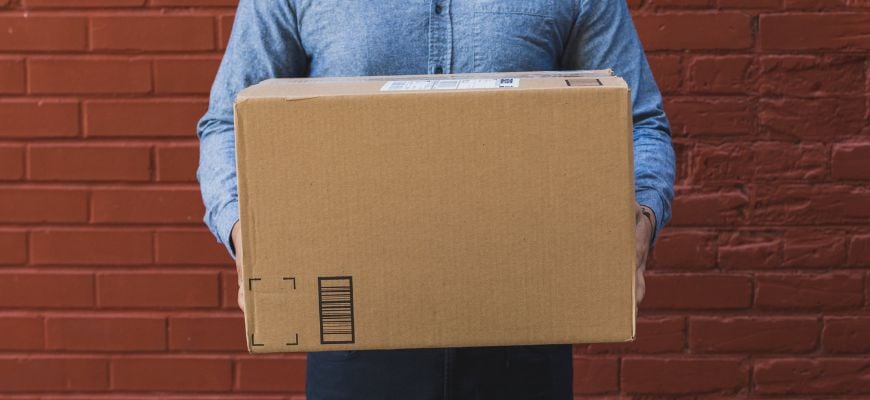
Creating your own Rocket Industrial personal account has many benefits:

Corrugated containers carry 90 to 95 percent of America's manufactured goods to their consumers. This calls for the production of more than 25 billion of these sturdy boxes annually - an average of 500 boxes for every family in the United States each year.
Corrugated is the largest segment of the packaging industry. Why is it so widely accepted and used? Value and performance. Corrugated shipping boxes, on average, cost well under one percent of the value of the goods they carry, making them the least expensive container ever developed having such a wide range of protective abilities. They minimize distribution costs while protecting their contents as they move from the point of manufacture to the point of consumption. Liquids, solids, granulated material - hard or soft - rugged or delicate - all are easily protected from in-transit damage.
Although the terms cardboard and corrugated are often used interchangeably, they refer to two different types of material.
The term cardboard is used to describe single-layered thick paper stock or heavy paper pulp. Chipboard boxes are a common type of cardboard that is often used for cereal boxes and containers for lightweight or non-rigid items. Cardboard is not recommended for shipping since it doesn’t offer a great deal of durability.
Corrugated is the preferred choice for storage and shipment due to the enhanced protection it offers. The technical term is ‘corrugated fiberboard’ and it’s made from combining sheets of linerboard and fluted sheets of medium. Linerboard is the flat, outer surface and the medium is the wavy, fluted paper between the liners. Both the linerboard and the medium are made from sturdy containerboard.
There are four main types of corrugated styles. Their design and strength depend on different combinations of linerboard and medium.
Single Face – Consists of an outer liner and one medium. It’s typically used as padding to wrap or cushion products inside a box and comes on a roll.
Single Wall – Also known as double face, this type of corrugated consists of one medium between two sheets of linerboard. Single wall boxes are extremely common in the e-commerce industry and for packaging lightweight products.
Double Wall – Consists of three sheets of linerboard with two mediums glued in between. This makes the box more rigid and is often used when shipping delicate, heavy electronics like televisions.
Triple Wall – The strongest corrugated style consists of four sheets of linerboard with three mediums glued in between. This style is often used when shipping industrial equipment and automotive parts.

Another aspect of corrugated performance is the flute type. Mediums can be made up of different flute sizes. Each flute has a different purpose and strength rating. Typically smaller flutes offer more structure, while larger flutes offer more cushioning.
A Flute – Offers a high level of stacking strength and cushioning. Contains 36 flutes per foot and a thickness of 1/4”.
B Flute – Excellent crush and puncture resistance. Contains 49 flutes per foot and a thickness of 1/8”.
C Flute – The most common type of flute style used in corrugated boxes. Contains 41 flutes per foot and a thickness of 11/64”.
E Flute – Excellent crush resistance combined with a thin construction makes this style commonly used for retail displays, pizza boxes, and packaging of glass products. Contains 90 flutes per foot with a thickness of 1/16”.
F Flute – The most lightweight and thin style is often used for packaging consumer goods such as jewelry and shoes. Contains 128 flutes per square foot with a thickness of 1/32”.

Box Maker’s Certificate (BMC) – The stamp printed on the bottom of a box identifies the manufacturer and standards the box has been certified for.
Bundle – A shipping unit of measure that refers to a designated number of boxes being fastened together for bulk transport.
Compression Strength - The maximum load a box can stand. Top-to-bottom compression strength is most commonly calculated as it relates to the load a box can handle when stacked.
Containerboard – The paperboard components (linerboard, medium/flutes, and chipboard) are used to create corrugated materials.
Die Cut – Using a die-cutter machine to create custom box shapes from sheets of corrugated material.
Edge Crush Resistance (ECT) - This acronym is generally followed by a number. That number represents the amount of force per square inch the box can withstand before it begins to crush under the weight. 32 ECT is the most common box strength. This means it can withstand up to a 32-pounds per square inch of vertical compression.
Flute – The wavy layer of corrugated medium that is glued to sheets of linerboard to create a corrugated board.
Kraft – Refers to a pulp, paper, or paperboard material made from wood fibers.
Linerboard – The flat sheets of paper that make up the outer and inner surfaces of a corrugated board.
Mullen (or Burst) Test – The industry standard for measuring the bursting strength of corrugated. For heavier-duty shipping, 200# boxes are most commonly used.
Overlap Container – A box style where the top and/or bottom flaps extend over each other.
Regular Slotted Container (RSC) - All of the flaps of a regular slotted container are the same length, and the lengthwise (normally outer) flaps meet at the center of the box. The space between the inner flaps varies depending upon the relation of the length to the width of the box.
Corrugated boxes come in a variety of sizes to package different items. Contact one of our packaging experts to ensure you get the best protection at the best cost for your corrugated packaging.